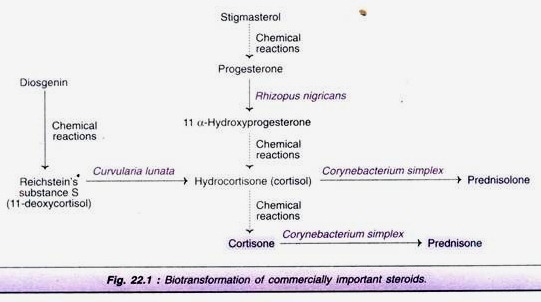ADVERTISEMENTS:
Read this article to learn about Volumetric Oxygen Transfer Coefficient (KLa)!
Since it is extremely difficult, if not impossible, to measure KL.
And the amount of bubble transfer area in a bioreactor or fermenter, an engineering parameter known as volumetric oxygen transfer coefficient, expressed by KLa, has been used to represent volumetric oxygen transfer coefficient as:
where a is the amount of surface area per unit volume. In this relation, the volumetric oxygen transfer coefficient, KLa, has the units of m mol, of O2/ml. h. unit concentration gradient. Using the proper concentration units, KLa has the unit of reciprocal of time (i.e., time-1).
The term (C* – CL) represented a “local” concentration difference. However, in equation 5.3 it represents a mean driving force in the whole reaction volume in the fermenter. For the system where the liquid is very well mixed but when the bubbles rise through the broth in a tall bioreactor without adequate mixing, then the proper driving force should be a log mean driving force, i.e.,
When both the liquid and gas bubbles are perfectly mixed, then the outlet gas bubble concentration represents the average gas bubble concentration in the fermenter. Therefore,
ADVERTISEMENTS:
(C* – CL) = C*outlet – CL (5.5)
Hanhart et al. have recommended this form. In most fermenters the actual operating condition is somewhere between these two (i.e., neither the gas bubbles nor the liquid phase are perfectly mixed in the true sense). Probably the later mean is to be preferred, although it is highly sensitive to experimental error when the uptake rate by cells is very low and Coutlet – CL is high. For this reason, some industrial engineers have preferred to use the KLa value computed from:
It appears that engineering problems of oxygen transfer in culture liquid in the bioreactor arise because of (1) the resistance encountered in the transfer process, thereby influencing mainly the KL value, and (2) the hindrance to increase interfacial transfer area “a”.
